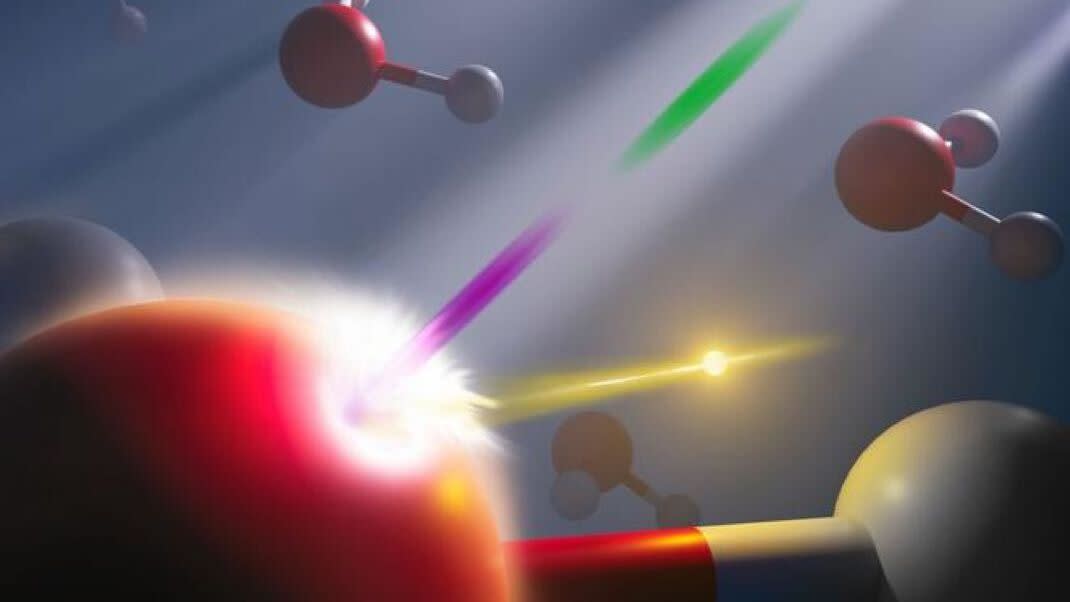Scientists Achieve an Incredible Feat: Freezing Water’s Electrons in Time

The world of subatomic excitations lives on the timescale of the attosecond (a billionth of a billionth of a second), which is incredibly hard to image.
An international team of scientists successfully captured the excitation of an electron hit with ionizing radiation, or X-rays, in water before the hydrogen-oxygen atoms had time to respond.
This atomic “freeze frame,” and other future images like it, will help scientists develop a deeper understanding of the electronic structure of molecules.
The subatomic world is, of course, very small. But it’s also quick. This is a world of attoseconds, where things occur on time scales one billionth of one billionth of a second. To put it another way, this time scale is so brief, that there are more attoseconds in just one second than there have been seconds in the history of the universe.
But in order to truly understand the interactions between particles and ionizing radiation in the subatomic world, scientists need to capture atomic reactions on these incredibly short timescales. This world is so important to science that the physicists who developed the method for analyzing these attosecond movements won the Nobel Prize last year.
Now, scientists from the U.S. and Germany have leveraged the Linac Coherent Light Source (LCLS), located at SLAC National Accelerator Laboratory in California, to capture X-ray excitations at the attosecond level in liquid water—essentially capturing a freeze-frame of the moment when the electron experienced an energetic response, but before the hydrogen-oxygen atoms had time to respond. The results of the study were published Thursday in the journal Science.
“Until now radiation chemists could only resolve events at the picosecond timescale, a million times slower than an attosecond,” Argonne National Laboratory’s Linda Young, a co-author of the study, said in a press statement. “It’s kind of like saying ‘I was born and then I died.’ You’d like to know what happens in between. That’s what we are now able to do.”
The technique used to achieve this incredible feat is what’s called an “X-ray attosecond transient absorption spectroscopy,” or AX-ATAS. This approach uses two X-ray pulses—one to excite the water molecules and one to record the matter’s response to the ionizing radiation. According to the Germany-based group Deutsches Elektronen-Synchrotron (DESY), whose researchers were involved with the study, water was used as a test subject because its electron distribution creates two electric poles, which allows it to bond to other molecules in an essential-to-life process called “hydrogen bonding.”
“And on our first experiment, it worked!” Argonne National Laboratory’s Shuai Li, a co-author on the study, said in a press release. “But the signal we picked up in the data was ‘convoluted.’ It turns out that, in this transient snapshot, we were probing so many quantum states that we had to develop a completely new computational analysis method to understand the data.”
DESY successfully modeled the water’s response to the X-rays and confirmed that they were captured on attosecond timescales. Then, leveraging the University of Washington’s Hyak supercomputer, the team was able to “[yield] a pivotal advancement in the quantum-level understanding of ultrafast chemical transformation, with exceptional accuracy and atomic-level detail,” Li said.
Not only will this research give physicists an all-new attosecond perspective on quantum chemistry, it’ll also provide deeper insights into areas where contact with ionizing radiation is common—especially in space travel, cancer treatments, and nuclear reactors.
Now, not even the attosecond-long lives of atomic reactions can escape the gaze of human science.
You Might Also Like

